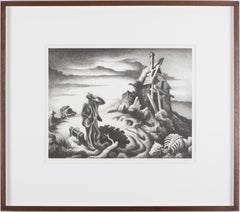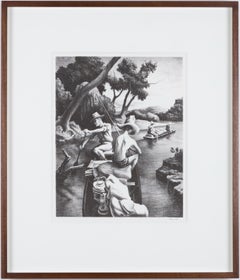Nasser Assar Art
A stranger in his birthplace, Nasser Assar is a well-known painter in the Western world. He was initiated to painting by Ali Mohammad Heydarian, a follower of Kamal-ol-Molk when still quite young. This is when his father had already instilled a deep love of Persian literature and poetry into him. On entering the department of Fine Arts of Tehran University (1950–53), like nearly all other intellectuals of his generation and particularly under the influence of his friendship with Manouchehr Yektai and Mehri Rakhsha, the overwhelming wave of modernism mesmerized him put behind Heydarian's teaching altogether. After graduation in 1953, he first went to Hamburg and a few months later to Paris, where he lived to the end of his life, paying only short visits to Iran to see his father in the 70s. He held his first solo exhibition at Primes Gallery in Paris (1955) introduced by Julian Alvard. In 1958 an exhibition of Chinese painters shocked him in a determining way, bringing about a turning point in his artistic creation. In 1961 Assar participated in a group exhibition called Antagonism focusing on the liberation of culture, organized by the committee of arts led by Alvard at the Museum of Decorative Art and introduced by Herbert Read. Later in the same year, he held his first solo exhibition at Lincoln Gallery when he met and befriended Francis Bacon. Calligraphy as a characteristic feature of his style appeared first in his second solo exhibition held at Smith Gallery in Brussels (1964), introduced by art editor, critic Gerald Gassiot Talabot who invented the term Figurative narrative aptly applicable to Assar's works. In 1966, he held his second solo exhibition at London, married Isabel Gasstines whose series of portraits, which Assar drew from 1967–79, was called icons by Roger Munier, philosopher, essayist and translator, while Yves Bonnefoy, the poet described them as approaching Byzantine painting, Roman frescos and Giacometti's paintings. In 1972 during a trip to Iran, he met Henry Corbin, Iranologist in Tehran with their friendship lasting to the end of Corbin's life. In 1982, he becomes a French citizen. From 1991–2004, he produced a series of lithographs for several books by famous French literary figures. In 2001 the literary review Nue dedicated a special issue to Assar and his lifelong friend Yves Bonnefoy. Nasser Assar's Trees was showcased in 2007 at Lambert Rouland Gallery in Paris and in 2009 Christophe Gillard Gallery held a review of his works since 1950. Assar's prose-paintings intimately associates his intimate friend Sohrab Sepehri, with only this major difference that Assar discovered and internalized the Far East from the West, while Sepehri reached it from the East. Alienated from Iran and Iranians, the contemporary painter Nasser Assar died on July 28 in France. Despite his significant presence among French and western artists, intellectuals and poets and his friendship with remarkable people of those lands, it is strange that his demise went by in silence with very little reverberation in media and press.
1970s Modern Nasser Assar Art
Lithograph
1970s Modern Nasser Assar Art
Lithograph
1930s American Modern Nasser Assar Art
Lithograph
1930s American Modern Nasser Assar Art
Lithograph
1970s Modern Nasser Assar Art
Paper, Lithograph
1930s American Modern Nasser Assar Art
Lithograph
1940s American Modern Nasser Assar Art
Lithograph
Mid-20th Century Modern Nasser Assar Art
Lithograph
Mid-20th Century Modern Nasser Assar Art
Lithograph
1940s American Modern Nasser Assar Art
Lithograph
1980s Modern Nasser Assar Art
Paper, Lithograph
Late 20th Century Modern Nasser Assar Art
Lithograph
1970s Modern Nasser Assar Art
Lithograph
1970s Modern Nasser Assar Art
Paper, Lithograph

